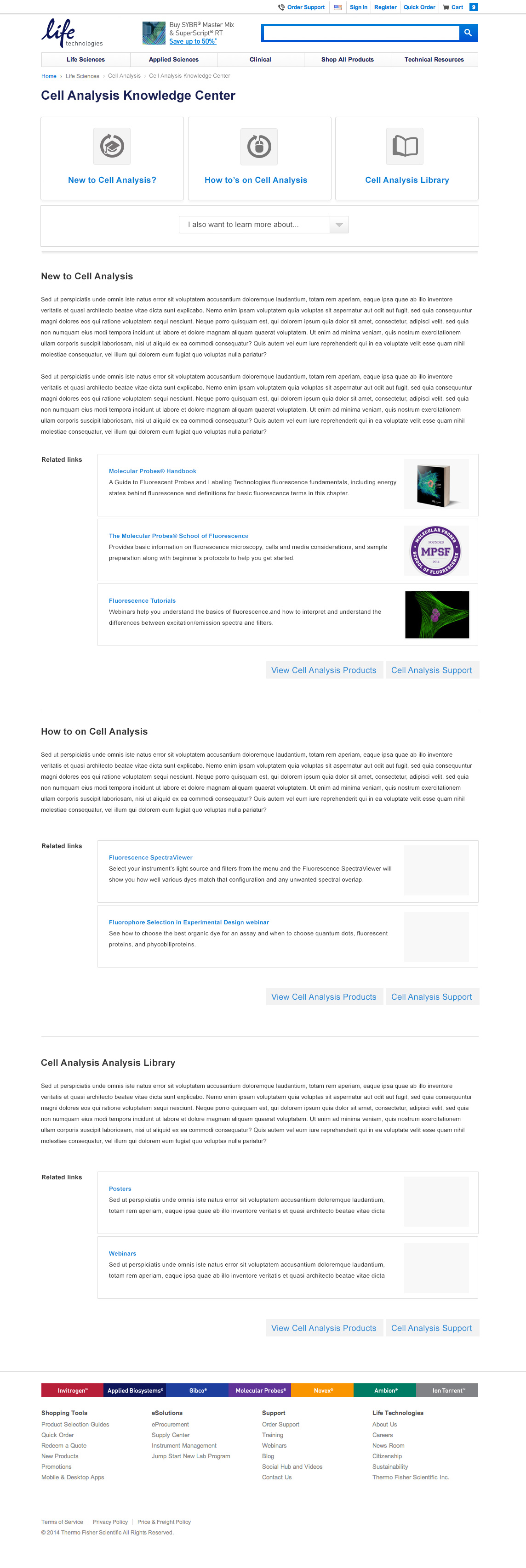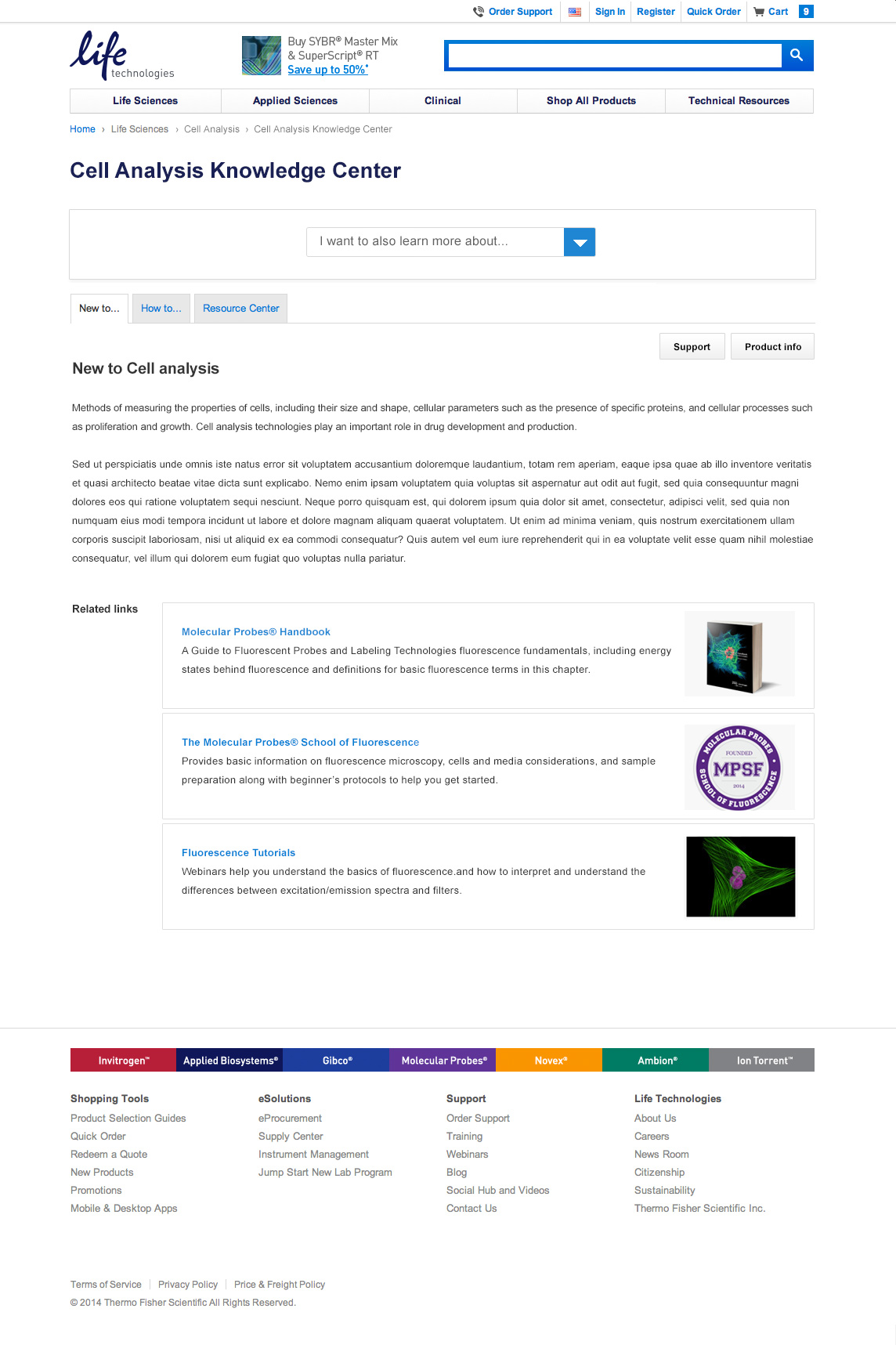Documentation Design
Request
Assist with the architecture of ingested content during the integration of Thermo Fisher Scientific and Life Technologies
Solution
At the end of 2013 as our Life Tech CQ instance was about to ingest a massive amount of content from a soon-to-be-legacy Thermo Fisher Scientific website (also built in CQ, btw), I was tasked to work the UX for the Digital Content team.
The amount and types of data we were consuming was vast. Rather than go down the assumed path of creating 30 different templates that would jam the majority of the content into somewhat relevant structures, I proposed to looked at the data in terms of simple, easy to understand informational design patterns that would assist the end user in deciding if the content was appropriate to their needs.
Rarely do our users enter from the homepage and drill-down. All the levels/segmentation that was proposed by other departments created conflict among the Content Editors. I suggested they abandoned that method altogether – as those classifications were primarily internal, business defined – essentially unimportant to our customers.
Instead, I proposed a flatter hierarchy with better SEO tagging, less clicks to get to content (should the user arrives on a landing / content collection page), and delegate a modular, easy to document / even easier to understand information components to be added on the page in whatever way the document or article flowed naturally.


